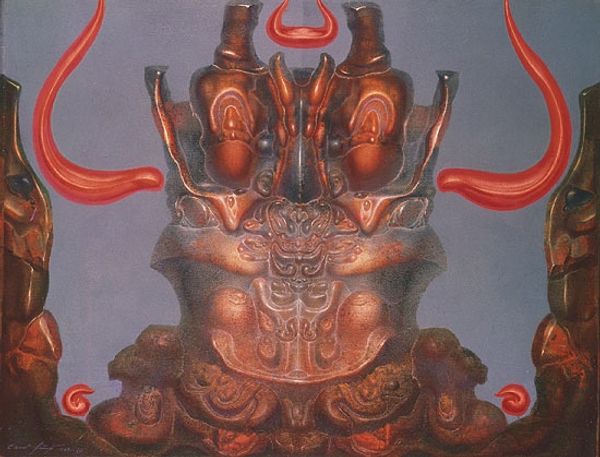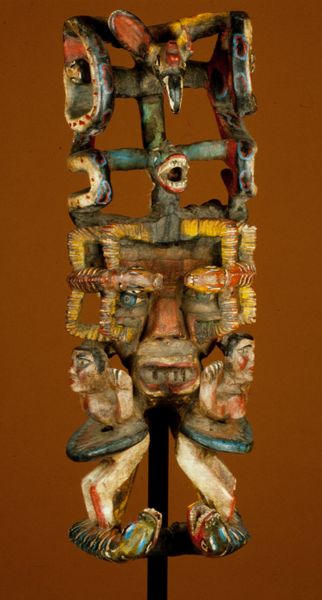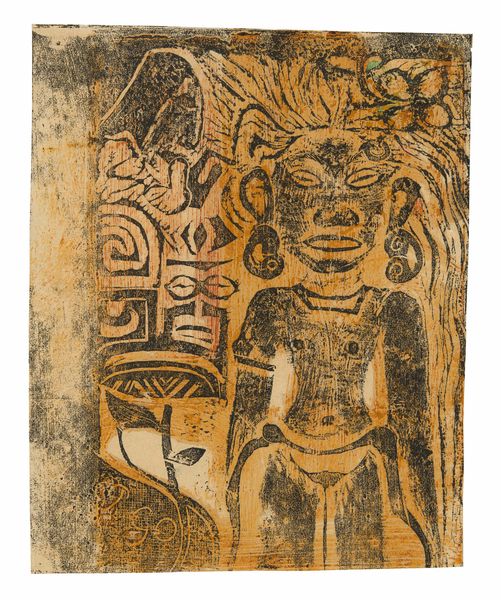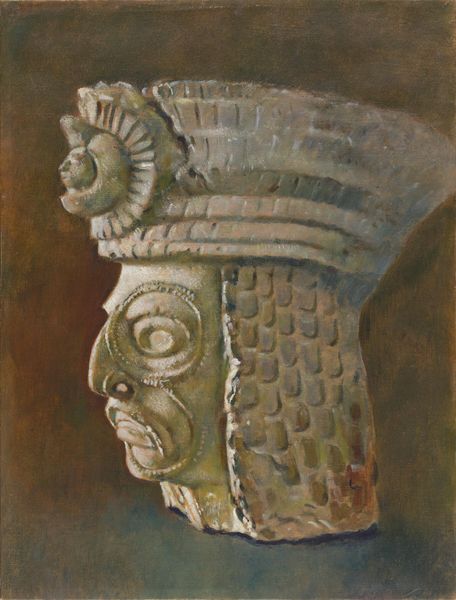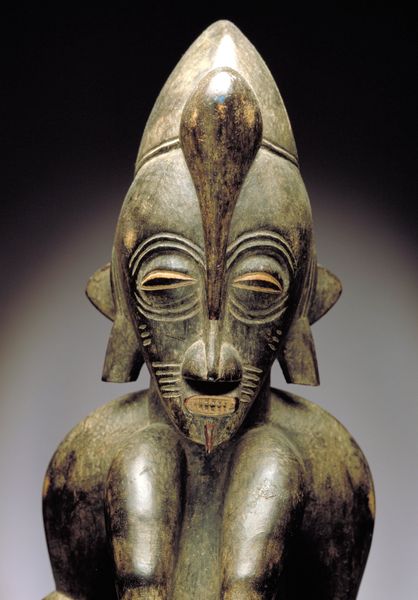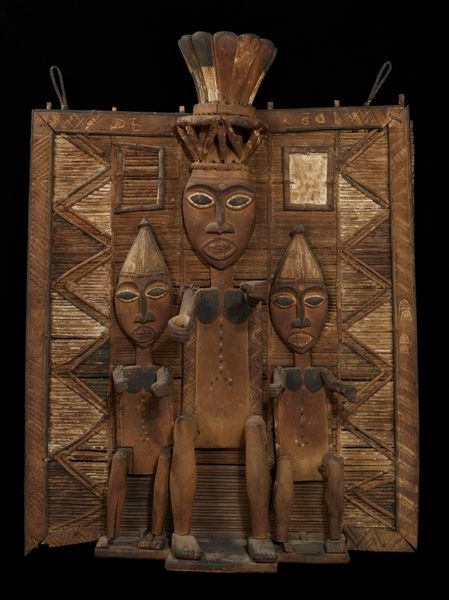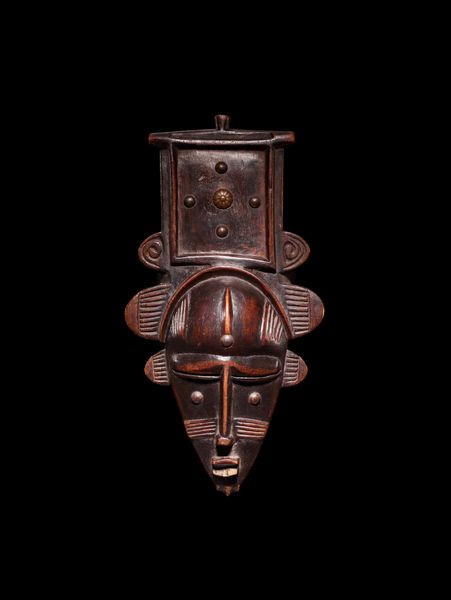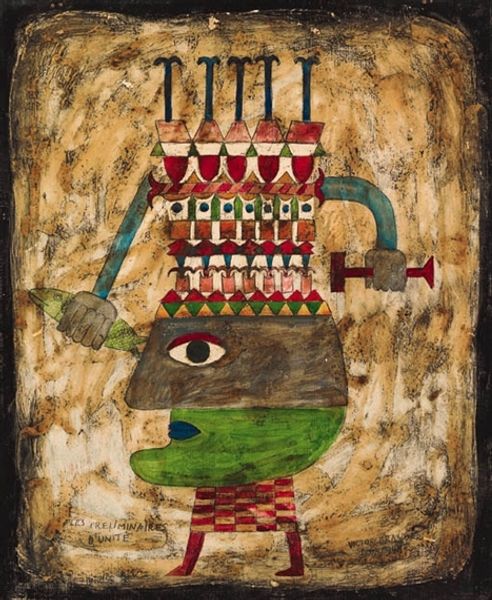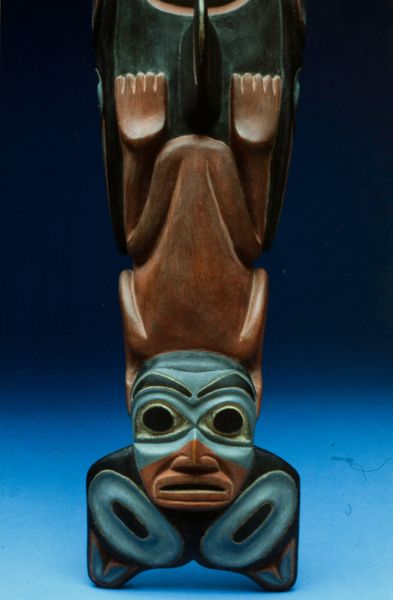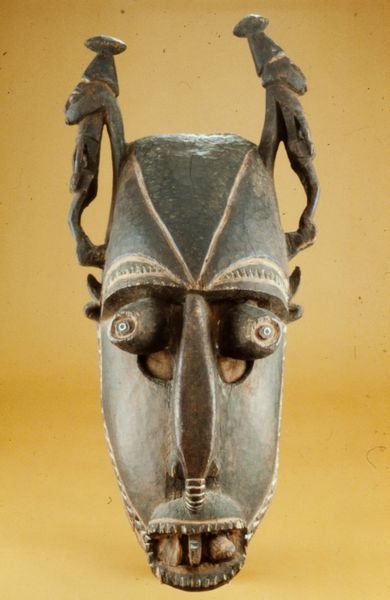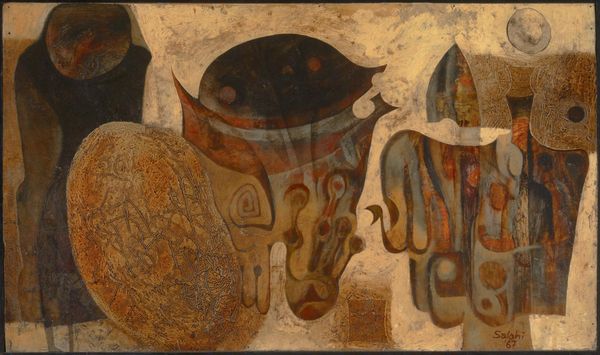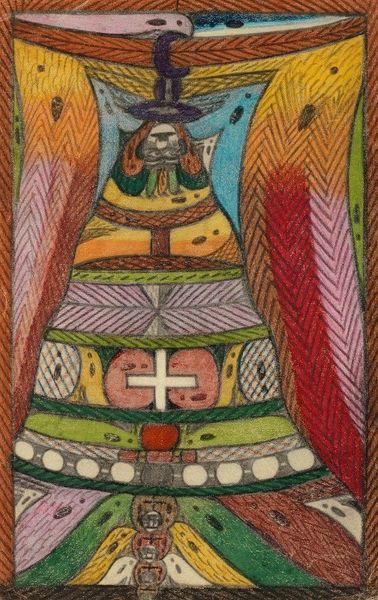
painting, oil-paint
#
portrait
#
painting
#
oil-paint
#
figuration
#
surrealism
#
portrait art
Copyright: Ernst Fuchs,Fair Use
Curator: Ernst Fuchs's "Cherub of the Shin," an oil on canvas from 1965. Editor: Immediately, I’m struck by the imposing presence. It’s so monumental. The color palette, predominantly earth tones against that deep green, creates a sense of ancient mystery. It feels both sacred and unsettling. Curator: Fuchs was a master of blending esoteric symbols with the surreal. Note the Shin symbol prominently displayed; in Kabbalistic tradition, it represents fire and divine presence. This image blends Eastern mysticism and European artistic tradition. Editor: It's difficult to ignore the almost colonial undertones in this combination. Whose divine presence is being represented, and who gets to define it? How does this symbol, divorced from its original context, function within a Western surrealist painting? The portraiture feels abstracted, the lines creating geometric masks almost as a reference to cultural ritual, appropriating and refashioning what those images are. Curator: I understand that perception, and yet I am fascinated by how Fuchs, in his unique way, taps into the universality of archetypes. That Kabbalistic symbolism is meant to evoke ancient systems of knowledge. I perceive an interrogation on inherited understanding of image. Editor: Yes, but even archetypes are shaped by cultural and historical forces. Look at the adornments. They appear ceremonial. I wonder to whom are they meant for? I understand art history can provide an alternate lense but is that possible if the current framework doesn't account for its flaws? The painting raises questions about representation, power dynamics, and the complexities of cultural appropriation. Curator: And yet the "Cherub of the Shin" embodies art’s power to traverse cultural boundaries. Perhaps the surrealist aspect forces us to reassess inherited ways of seeing. This portrait invites us to contemplate the confluence of ancient and modern spiritual thought. Editor: Ultimately, this compels viewers to consider what symbols mean and whose story informs their narrative. Curator: Absolutely, a fitting point that leads to the heart of Fuchs's mystical and psychologically rich world.
Comments
No comments
Be the first to comment and join the conversation on the ultimate creative platform.
